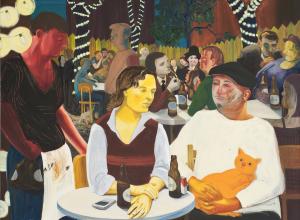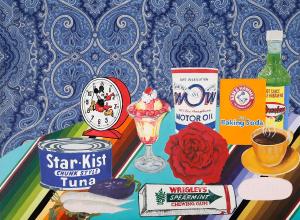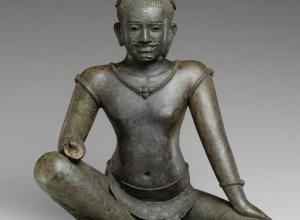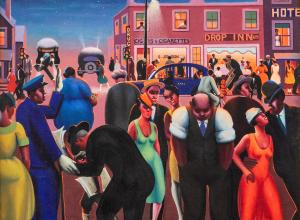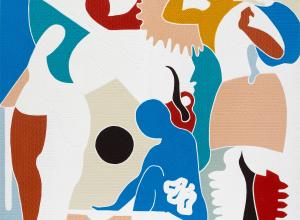The exhibition includes works that date from the 4th and 5th centuries to modernity. Art Nouveau works are particularly well-suited for an iridescent finish. The style emphasized flowing floral designs and insect imagery, two of places that iridescence is naturally occurring. A Hungarian turn of the 20th-century lusterware pitcher shows the period’s fascination with this visual effect. Manufactured by Zsolnay, the vessel showcases the company's recently patented eosin reduction glazing technique, which brings an intensity of colors to the surface of this organic design.
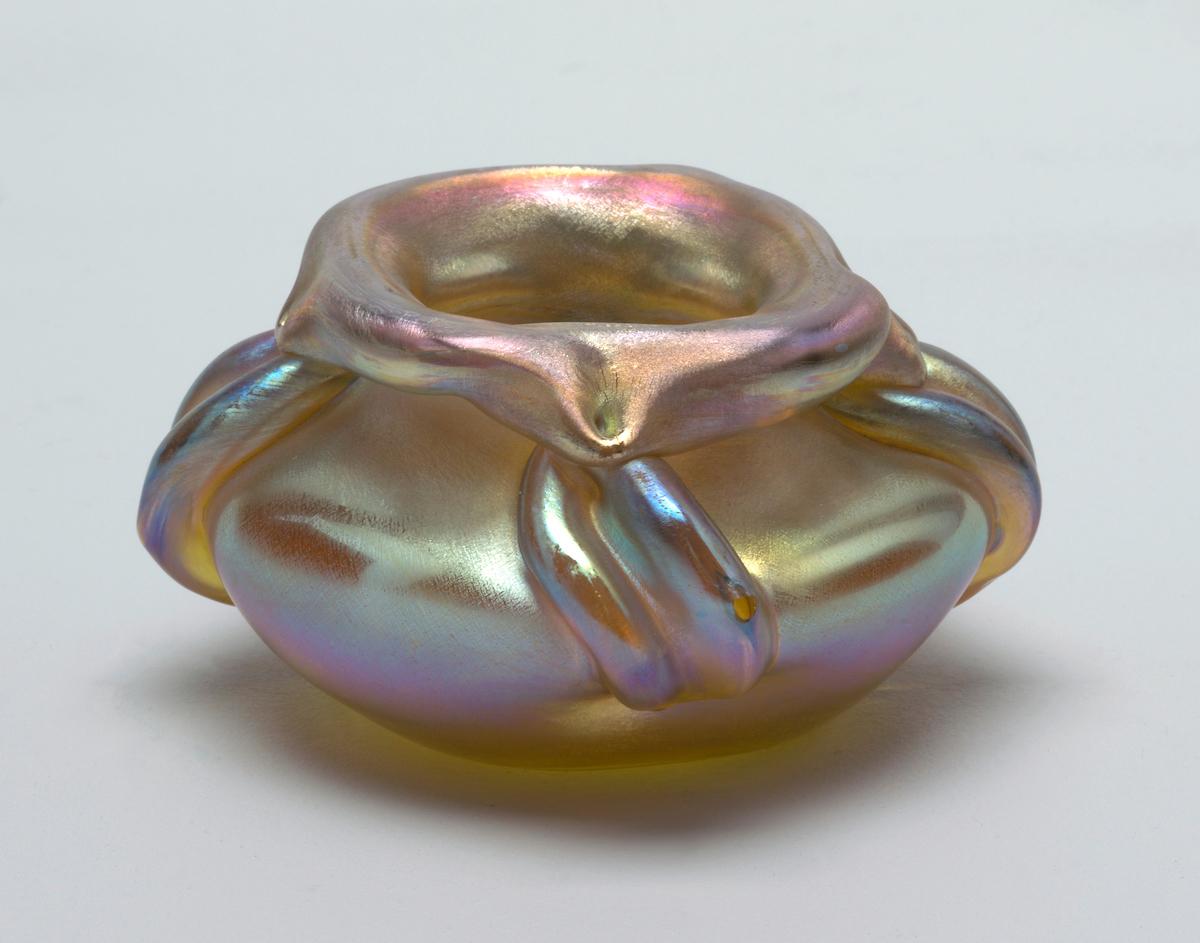
Vase, ca. 1895–96; Design Director: Louis Comfort Tiffany (American, 1848–1933); Produced by Tiffany Glass and Decorating Company (New York, New York, USA); Free-blown favrile glass; Gift of Anonymous Donor, 1952-166-33.
The Cooper Hewitt, Smithsonian Design Museum is celebrating all that glitters in their latest exhibition of works from the permanent collection, Iridescence. A stunning visual effect found in nature, for centuries artists and craftsman have strived to replicate the vibrancy of this elusive quality. Through the exhibition, the Cooper Hewitt traces the history and impact of the optical effect that changes before your eyes.
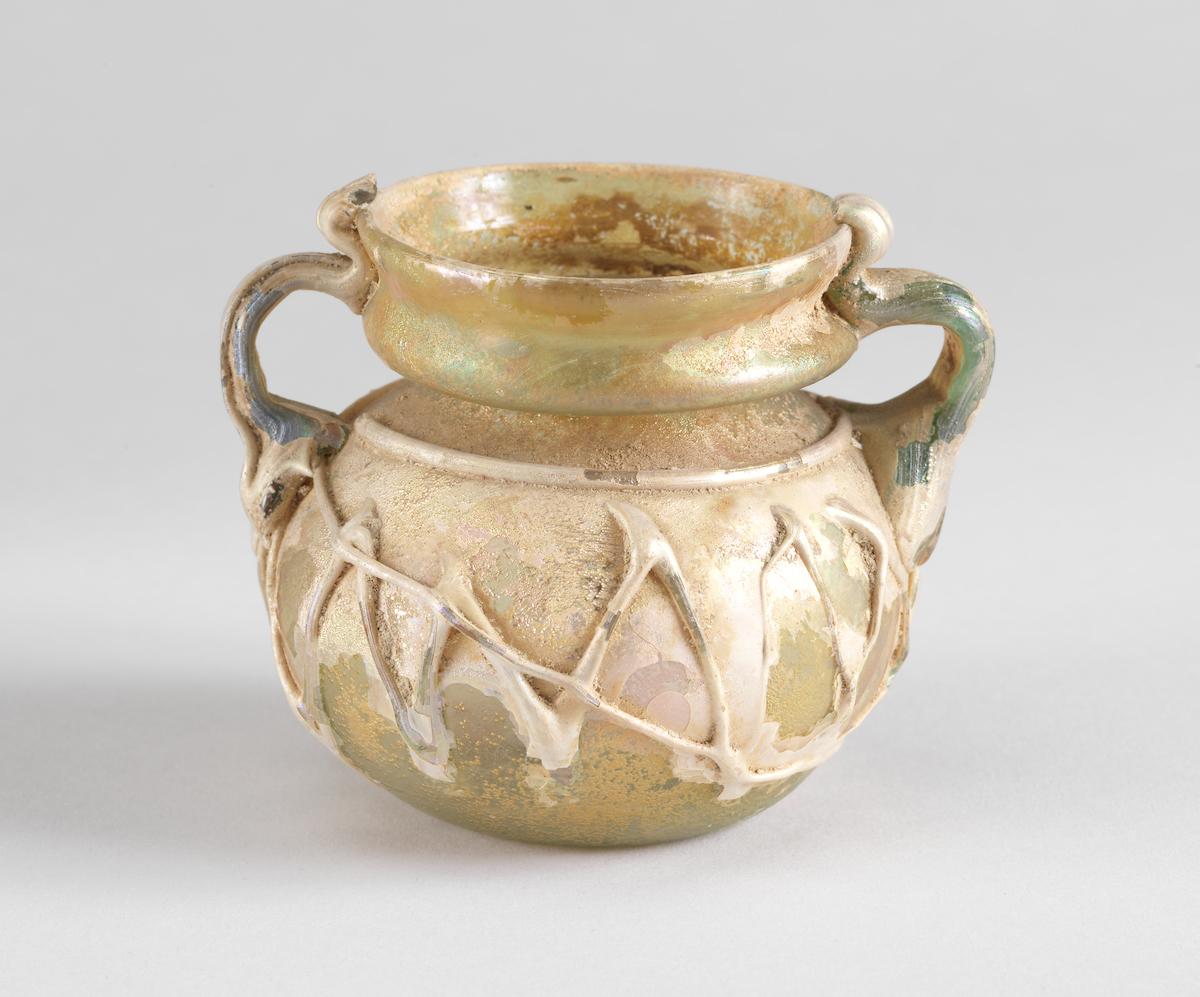
Jar (Eastern Mediterranean); 4th–5th century; Free-blown glass with trailed decoration; Gift of Mrs. Leo Wallerstein, 1961-88-7.

Leaf Pitcher; ca. 1901; Designed by Lajos Mack (Hungarian, 1877–1963); Manufactured by Zsolnay, Pècs Factory (Pècs, Hungary); Pressed and hand-shaped, high-fired eosin-glazed fine white earthenware; Museum purchase from Charles E. Sampson Memorial Fund, 2007-3-1.
Beatrice Wood (1894-1998), a ceramist known for her use of all-over metallic luster glazes, is also represented. A member of the avant-garde for much of her life, Wood was an actress, author, artist, and pioneer of the Dada movement. She devoted the second half of her life to her career in ceramics, creating a large body of works in her signature shimmering style.

Place Setting from Service for Twelve; 1972–73; Designed and made by Beatrice Wood (American, 1894–1998); Thrown luster-glazed earthenware; Gift of Mark Del Vecchio and Garth Clark, 1986-23-1/5.
In addition to ceramic and glass works, the exhibition features jewelry and textiles, all of which catch the eye and captivate with their glimmering colors.
Iridescence is on view in the Cooper Hewitt’s Teak Room through March 29, 2019.







